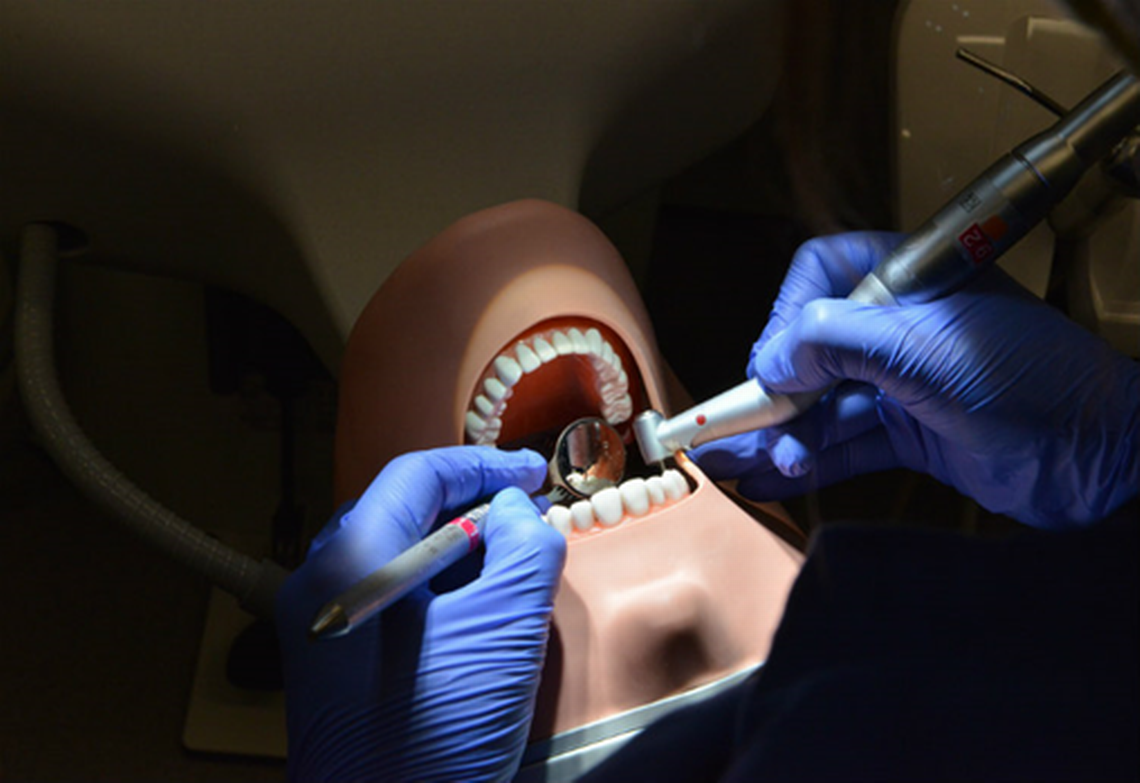Here’s how a UMKC dental student honed his skills while patching up a thrifty writer

My mother, born 1903 on a stony Missouri Ozarks homestead, lost all her teeth before she reached her 45th birthday. Her dentist first extracted the molars, after which I — as the boy across the table — watched mama struggle to chew with her scant remaining incisors. Those also were hauled out a month later.
Even in 1947 dentists used painkillers, but it must have hurt. She never complained. Like her older sisters, those Ozark folks were not much for bellyaching (about dentists, anyhow). By middle age all three sisters chewed with full-mouth clacking falsies. That was American dental care for working people during my childhood.
By contrast, last December at age 87 and thanks to modern dentistry, I was still blessed with some good teeth while another six ached. Six bad teeth! Plus a flock of cavities and one long-vacant socket in my lower jaw. As I later told my particular student at the UMKC School of Dentistry, I’m not poor but I’m not rich.
So on that fateful first morning last December, I approached 25th and Cherry among a gathering flock of others thrifty as myself, seeking help at a third to half the standard price. Seeking help but also seeking to help. Because, by solving the problems within our mouths, the young students here would become experienced dentists.
My student turned out to be 28-year-old David Scott Brooks, who peppers his exertions with cheerful exclamations: “Beautiful! Wonderful! Excellent!”
Behind him he had four years of college and already nearly three of dental school. He pulled me through a series of X-rays unlike any I had experienced, panoramic plus detailed images of every tooth down to its deepest root.
I was knot-headed at first, determined to save my only two upper molars that didn’t yet hurt. But X-rays had revealed decay in both. Conferring repeatedly with the many faculty professors roaming this dental empire, he sketched out a plan. He would pull those bad upper molars at both ends of my mouth, preserving the healthy incisors in the middle. Then he would design a partial denture of chrome-cobalt alloy with plastic teeth spanning the back of the entire upper jaw. His plan convinced me.
David is one of 436 dental students who work here along with 60 in dental hygiene and 34 advanced residents. It’s a costly program, with tuition charges usually above $20,000 per semester. Students throng within what seems like acres of 8-by-10-foot cubicles, 248 of them, each a tiny complete dental lab overhung by the spider-like arm of a surgical light. Together they help 16,000 patients a year during about 60,000 appointments, most of them three hours long.
When David told me he would pull three molars on the upper right, one on the upper left on my next visit, I gripped the chair arms and pondered whether to order an ambulance for that trip home.
“No, no,” he said. “You can drive yourself.”
And I did, easily. He eased my pain by dispensing a fragrant whiff of nitrous oxide (laughing gas). Not that I laughed. Seldom in the world of health care, incidentally, do we hear that word, “pain.” What we hear instead is “discomfort.” I mentioned this to David, who just smiled. The laughing gas and injections of lidocaine did help.
Big-time medical surgeons dodge much of this problem. Their patients are usually anesthetized, knocked out cold, before the doctor even appears. Dentists tread a trickier path. Which will hurt worse, the dental operation itself or the lidocaine shot to relieve it? David often let me make that decision.
Step by step with the help of faculty, he carried out his plan. He removed the remaining bad teeth, then designed a denture with a chrome-cobalt alloy base and seven plastic teeth. Fitted only days ago, it now sits snug in my mouth as I tell this tale of teeth.
Two weeks ago an exercise coach in the gym I attend mentioned that her husband had paid more than $3,000 for a crown on a single tooth. A tiny part of my treatment at the dental college was a bridge over that long-vacant socket I noted earlier. It was composed of two crowns with a single false tooth hanging between.
My total dental school bill for that bridge and all the other work over 11 months was less than $3,500. I wish I could tell my thrifty old mother about that deal.
Contact the columnist at hammerc12@gmail.com
